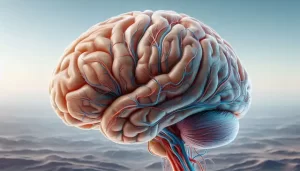Nature: Stimulating environment keeps the brain young
- A Persistent Crisis: The Looming Specter of Drug Shortages in United States
- Rabies: The fatality rate nearly 100% once symptoms appear
- Human Brain Continues to Grow: Study Shows Increase in Size and Complexity
- CRISPR Genome Editing: From Molecular Principles to Therapeutic Applications
- Metformin Helps Immune System Better Recognize Cancer Cells
- Highlights of Prostate Cancer Research at the 2024 EAU Congress
Nature: Stimulating environment keeps the brain young
- Red Yeast Rice Scare Grips Japan: Over 114 Hospitalized and 5 Deaths
- Long COVID Brain Fog: Blood-Brain Barrier Damage and Persistent Inflammation
- FDA has mandated a top-level black box warning for all marketed CAR-T therapies
- Can people with high blood pressure eat peanuts?
- What is the difference between dopamine and dobutamine?
- How long can the patient live after heart stent surgery?
Nature Sub-Journal: Stimulating environment keeps the brain young
Whether it is a human or an animal such as a mouse, the genome contains tens of thousands of genes. However, it is not only the overall genetic blueprint that determines the cell function and health, but actually which genes are turned on or off. .
As we all know, aging, living conditions, behavior, and environmental factors all affect the ability to turn genes on or off. This phenomenon called “epigenetics” has become a current research hotspot.
More than 2,000 years ago, Mencius once said-be born in sorrow and die in happiness. This tells us how much a person’s environment will have on his life.
In June 2021, researchers from the Regenerative Therapy Center of the Technical University of Dresden, Germany, published a research paper entitled: Environmental enrichment preserves a young DNA methylation landscape in the aged mouse hippocampus in the journal Nature Communications.
Through single-nucleotide resolution whole-genome DNA methylation sequencing, it is proved that the high stimulation environment can also restore a large number of age-related DNA methylation changes in the brain hippocampus, indicating that the high stimulation environment can make the brain’s memory control center hippocampus Keep your body young. This also explains why an active, diverse life helps maintain mental health in old age.

Aging is related to the gradual decline of brain function, which is manifested as cognitive impairment, increased risk of neurodegenerative diseases, and loss of neuroplasticity. The decline in brain function during aging is related to epigenetic changes, including DNA methylation.
Lifestyle factors, including physical exercise, cognitive stimulation, and social interaction, can alleviate age-related brain function decline in humans and improve brain function during aging, but their influence on age-related epigenetic changes is unclear .
With age, the level of DNA methylation will gradually decrease, so the level of DNA methylation can be used as an epigenetic clock to measure the level of aging and track a person’s biological age.
So does lifestyle affect brain function during aging by changing the level of DNA methylation?
In order to verify this, the research team conducted a study in mice. They let two groups of mice grow up in different environments. One group grew up in a stimulating environment with various toys and tunnel tubes. The other The group does not have these.
Then, the genomes of these two groups of mice were tested, and it was found that those mice that grew up in a stimulating environment had less decline in their DNA methylation levels as they got older.
In mice that grew up in a low-stimulus environment, their DNA methylation levels decreased more significantly.
These changes in DNA methylation levels will not affect genetic information, but they will affect whether a gene is activated or the level of activation.
These test results mean that the mice that grew up in a stimulating environment, they maintained a younger state to some extent.
The research team further discovered that the stimulus environment affected genes related to new neurons and cell connections in the hippocampus of the mouse brain, which is the memory control center in the brain.
From an epigenetic point of view, mice living in a stimulating environment maintained a younger brain hippocampus.
Compared with mice of the same age that grew up in a low-stimulation environment, the brains of mice that grew up in a stimulus environment are more malleable and have greater “neural plasticity.”
Many other studies have shown that mice living in a high-stimulus environment perform better on memory tests than mice living in a low-stimulus environment.
Gerd Kempermann, the corresponding author of the study, said that this excellent performance is probably due to the more stable DNA methylation levels of mice living in the stimulating environment.
Finally, Gerd Kempermann said that although for humans, how lifestyle affects behavior and how humans respond to external environmental stimuli is much more complicated than mice, but the basic epigenetic principles of humans and mice are the same. .
In general, the high stimulation environment has great potential to prevent and offset brain dysfunction in elderly animals, including synaptic plasticity, hippocampal neurogenesis and cognitive ability.
Through single-nucleotide resolution whole-genome DNA methylation sequencing, it is proved that high stimulation environment can also restore a large number of age-related DNA methylation changes in the hippocampus of the brain.
These findings provide a potential mechanism: positive interaction with the environment can support and promote brain function throughout the magical cycle.
Paper link:
https://www.nature.com/articles/s41467-021-23993-1
Nature: Stimulating environment keeps the brain young
(source:internet, reference only)
Disclaimer of medicaltrend.org
Important Note: The information provided is for informational purposes only and should not be considered as medical advice.



